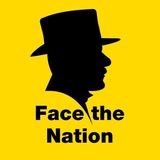On May 18, 1969, Apollo 10 launched from NASA’s Kennedy Space Center. It was the first flight of a complete, crewed Apollo spacecraft to operate in lunar orbit @facethenation
Apollo 10 transmit the first color pictures of Earth over the Moon @facethenation
Charles Lindbergh completed the first solo flight across the Atlantic Ocean (from New York 🇺🇸 to Paris 🇫🇷) on May 21, 1927 @facethenation
Argentinian forces invaded the British overseas territory of the Falkland Islands on April 2, 1982.
Argentina had claimed sovereignty over the islands for many years and their ruling military junta did not believe that Britain would attempt to regain the islands by force.
Despite the huge distance involved - the Falklands were 8000 miles away in the South Atlantic - Britain, under the leadership of Margaret Thatcher, undertook the extraordinary feat of assembling and sending a task force of warships and rapidly refitted merchant ships to the Falklands.
The task force reached the Falklands in early May. On May 2, the Royal Navy submarine HMS Conqueror sank the Argentinian cruiser General Belgrano, with the loss of over 300 of her crew. After this incident, Argentinian ships remained in port.
However, the Argentinian airforce still posed a significant threat. The Royal Navy lost several warships to attacks from Argentinian aircraft, which were armed with missiles. Its Fleet Auxiliary ships were attacked at Fitzroy and the supply ship Atlantic Conveyor was also sunk.
British forces landed on the islands on May 21. After a series of engagements against a well dug-in but ill-trained conscripted Argentinian Army, they began the battle for Stanley, the islands’ capital on June 11.
Argentinian forces surrendered on June 14, 1982.
@facethenation
Argentina had claimed sovereignty over the islands for many years and their ruling military junta did not believe that Britain would attempt to regain the islands by force.
Despite the huge distance involved - the Falklands were 8000 miles away in the South Atlantic - Britain, under the leadership of Margaret Thatcher, undertook the extraordinary feat of assembling and sending a task force of warships and rapidly refitted merchant ships to the Falklands.
The task force reached the Falklands in early May. On May 2, the Royal Navy submarine HMS Conqueror sank the Argentinian cruiser General Belgrano, with the loss of over 300 of her crew. After this incident, Argentinian ships remained in port.
However, the Argentinian airforce still posed a significant threat. The Royal Navy lost several warships to attacks from Argentinian aircraft, which were armed with missiles. Its Fleet Auxiliary ships were attacked at Fitzroy and the supply ship Atlantic Conveyor was also sunk.
British forces landed on the islands on May 21. After a series of engagements against a well dug-in but ill-trained conscripted Argentinian Army, they began the battle for Stanley, the islands’ capital on June 11.
Argentinian forces surrendered on June 14, 1982.
@facethenation
British frigate HMS Antelope explodes 💥 in San Carlos Water, off East Falkland, after attacks by the Argentine Air Force during the Falklands War, May 24, 1982 @facethenation
Paris students in savage battles - 1968
In May 1968, France was brought to a near standstill by protests that began with students objecting to reform of the university system.
A violent response by the police to the barricades erected around the Sorbonne flared into a much larger confrontation between the state on one side and students and workers on the other. At one point nearly a million protesters marched through Paris to demand the resignation of President Charles de Gaulle.
@facethenation
In May 1968, France was brought to a near standstill by protests that began with students objecting to reform of the university system.
A violent response by the police to the barricades erected around the Sorbonne flared into a much larger confrontation between the state on one side and students and workers on the other. At one point nearly a million protesters marched through Paris to demand the resignation of President Charles de Gaulle.
@facethenation
The Atomic Cannon, at 280 mm, was the largest nuclear capable mobile artillery @facethenation
Upshot-Knothole Grable, a test carried out by the U.S. military in Nevada on May 25, 1953.
A 280 mm nuclear shell was fired 10 km into the desert by the M65 Atomic Cannon, detonating in the air, about 500 feet above the ground, with a resulting 15 kiloton explosion.
The codename Grable was chosen because the letter Grable is phonetic for G, as in "gun", since the warhead was a gun-type fission weapon. As a shell, or artillery-fired atomic projectile, the device was the first of its kind. The test remains the only nuclear artillery shell ever actually fired in the U.S. nuclear weapons test program.
@facethenation
A 280 mm nuclear shell was fired 10 km into the desert by the M65 Atomic Cannon, detonating in the air, about 500 feet above the ground, with a resulting 15 kiloton explosion.
The codename Grable was chosen because the letter Grable is phonetic for G, as in "gun", since the warhead was a gun-type fission weapon. As a shell, or artillery-fired atomic projectile, the device was the first of its kind. The test remains the only nuclear artillery shell ever actually fired in the U.S. nuclear weapons test program.
@facethenation
This media is not supported in your browser
VIEW IN TELEGRAM
On May 25, 1953, the U.S. Army conducted a live nuclear artillery test shot, the only time the U.S. ever conducted such a test
@facethenation
@facethenation
